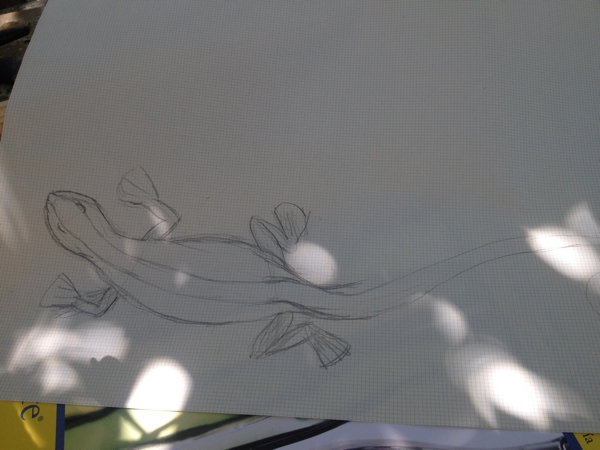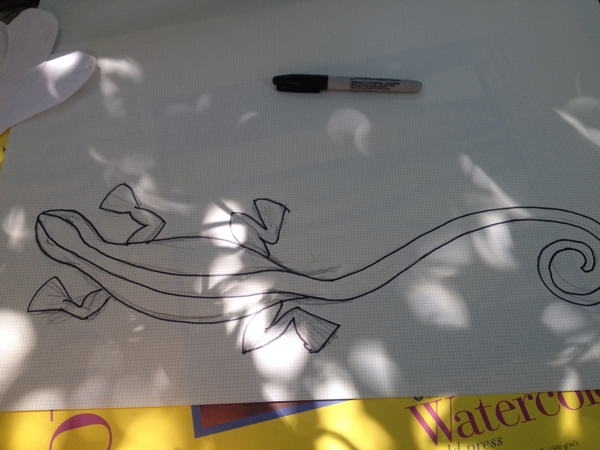Encountering the right-wing mindset on a daily basis is extremely wearying, and I only do it by reading the blogs/websites of people who actually dive into the fever swamps of The Blaze or Twitchy or—Chthulhu help us—World Net Daily or Focus on the Family. I can not imagine a more soul-numbing job.
For me these days, it’s the jaw-dropping ignorance combined with the absolute certainty that the worldview which they have created from whole cloth inside their minds—completely divorced from evidence right in front of them—that gives me a bad feeling in my tummy.
I will give two examples, the second of which I would like to examine in a little detail.
The first is the right-wing nutjob [RWNJ] who went on the teevee and simply lied about how before the 1970s gun safety instruction was standard curriculum in elementary schools. Why would anyone make up something like that?
The second example is equally egregious. In Alabama:
In an effort to educate the public on the divine origins of America’s founding documents, Jackson County Commissioner Tim Guffey (R) has proposed erecting a Ten Commandments monument, as well as displays of the U.S. Constitution and the Declaration of Independence, outside the county courthouse.
“If you look at the documents that was written — the Constitution, the Declaration of Independence — they are all stemmed from the word of God, from the Ten Commandments,” Guffey, who proposed the projects at a recent commission meeting, told WHNT on Thursday.
The commissioner insisted that the Ten Commandments proposal is “not for any type of religion” and would only serve to “make people go back and study” the sacred history behind the country’s founding documents.
—HuffPost, 8/15/14
Where does one even begin?
A good start would be to get a copy of the Constitution and a copy of the Ten Commandments and put them on the table in front of you. Get yourself some colored highlighters. (I was a little worried when I started this thought experiment, because it would not be easy finding ten different colors of highlighters. Then I came to my senses…)
Get yourself a black marker, too.
Highlight the first Commandment. Let’s use pink.
Now read through the Constitution—remember, it’s short, barely three pages—and highlight all the parts of our government that originate in the first Commandment.
What? Nothing? Okay, take your black marker and mark out the first Commandment so we can reuse the pink highlighter and not get confused. (“Confused”—get it? Because Commissioner Guffey can’t… never mind.)
Highlight the second Commandment and repeat.
I won’t belabor the point, although if I were in a room with Tim Guffey in front of teevee cameras, you’d better believe we would pursue this to the excruciating end.
Even the most sociolegal of the Commandments are not found directly in the Constitution. That is actually one of the glories of the document: it doesn’t engage in direct legislation, unlike most of the written national constitutions since then. We get to change the laws willy-nilly; the framework not so much.
Mr. Guffey might dig in his heels and say that the ninth Commandment about bearing false witness is the source of our right to a jury trial, but a) I myself would guess that this document had more to do with that; and b) that whole “bearing false witness” thing might not be a good topic to bring up in his situation.
Because, as one commenter in one of the evil liberal blogs I read on the topic said, the authors of the Constitution argued over Every. Single. Word. And if they had used the Decalogue as a source, they by Chthulhu would have said so. (It’s worth noting, too, that Benjamin Franklin proposed that they have a chaplain open every session of the Constitutional Convention with a prayer, but the delegates shot that idea down with prejudice, possibly because they thought Franklin was punking them, as was his wont.)
I can vouch for this historical view—one summer (1987) at GHP I read every single volume of Max Farrand’s The Records of the Federal Convention of 1787. Besides Jemmy Madison’s exhaustive diaries on every single motion and debate appertaining thereunto, Farrand collated everyone else’s diaries and letters to reveal the stunning process of cobbling together the world’s first—and best—written constitution. It was an amazing event, and a fascinating read.
Further, we have The Federalist Papers, in which Madison, Hamilton, and Jay got completely down in the weeds and explained very publicly the reasons for the document looking the way it did.
In neither artifact do we have our Founding Fathers praising Jesus and just lifting our nation up in His Name, O Father God, amen. It. Did. Not. Happen. (Nor, to be brief, did it happen in any other source documents from the period.)
So are Tim Guffey and his fellow Christianists ignorant or lying? They can’t be ignorant (oh all right, of course they probably are, but I’m giving them the benefit of the doubt), but given that whole “bearing false witness” thing, how could they be lying?
One explanation for this inexplicable mindset is that they are not lying—they actually believe these things to be true. Their minds require these things to be true in order for them to make sense of the world, and remember that, to the conservative mind, the world only makes sense if it’s full of unimaginable horrors, horrors against which only their faith, their courage, their version of reality can save us.
Of course, that’s being generous, because Tim Duffey is lying. Go back and read the other part of the words that he made with his mouth: this display of a specifically religious document on state property is “not for any type of religion,” which he immediately follows with
“The Ten Commandments is a historical document and it has nothing to do with religion,” he continued. “It shows that these founders had great beliefs in God and the Ten Commandments and His Word and it helped them get to the point where they were. Their feeling was God helped them build the Constitution and the Declaration of Independence. If you read all of the writings of John Adams, Patrick Henry, James Madison, Thomas Jefferson, John Jay, they speak about how that was their foundation that helped them interpret and write a great Constitution.”
Read more at http://wonkette.com/557310/alabama-idiot-thinks-constitution-based-on-ten-commandments-is-incorrect#bMSLpDJrm7ivvFDd.99
Highlights mine to underline the jaw-dropping contradiction. (Not to mention the complete untruth about the writings/mindset of all the men he mentions, of whom only Madison had a direct role in writing the Constitution.)
So we’re back to the eternal dichotomy: is this man stupid or lying?
I have devolved into heavy sighing, shaking my head, and mixing another modified margarita.
update: Go look at the last seven paragraphs of this article on this year’s Faith and Freedom Coalition in DC. The fear is palpable. It’s pitiful, it really is because it’s not based on anything real. Look at the sheer number of future tense verbs and infinitives: “wants to,” “plans to,” “going to.” It’s all in their heads, and bless their hearts.
update redux [FFS edition]: Dear Mrs. McCarthy: Judy, sweetie, a raised eyebrow and pursed lip is not persecution.











